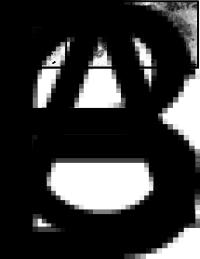Molecular cytogenetic analysis of a triploid population of the human broad tapeworm, Dibothriocephalus latus (Diphyllobothriidea)
- PMID: 33678200
- PMCID: PMC11010143
- DOI: 10.1017/S0031182021000408
Molecular cytogenetic analysis of a triploid population of the human broad tapeworm, Dibothriocephalus latus (Diphyllobothriidea)
Abstract
The large-sized tapeworm Dibothriocephalus latus is known as the broad or fish-borne cestode of mammals that is capable to infect humans and cause diphyllobothriosis. Recently, molecular data on D. latus has been accumulating in the literature and a complete genome sequence has been published; however, little is known about the karyotype and chromosome architecture. In this study, an in-depth karyological analysis of 2 D. latus specimens was carried out. The plerocercoids originated from a perch caught in subalpine Lake Iseo (Italy) and the tapeworms were reared in hamsters. Both specimens contained cells with a highly variable number of chromosomes ranging from18 to 27. Nevertheless, the largest portion of mitotic figures (47%) showed a number corresponding to the triploid set, 3n = 27. Accordingly, the karyotype of the analyzed specimens consisted of 9 triplets of metacentric chromosomes. Fluorescence in situ hybridization (FISH) with the 18S rDNA probe clearly demonstrated the presence of 3 clusters of hybridization signals on the triplet of chromosome 7, thus confirming the triploid status of the specimens. FISH with a telomeric (TTAGGG)n probe confined hybridization signals exclusively to the terminal chromosomal regions, supporting the earlier findings that this repetitive motif is a conserved feature of tapeworm telomeres.
Keywords: 18S rDNA; parthenogenesis; polyploidization; telomeres; triploid.
Conflict of interest statement
The authors declare there are no conflicts of interest.
Figures








References
-
- Agatsuma T, Terasaki L, Yang L and Blair D (1994) Genetic variation in the triploids of Japanese Fasciola species, and relationships with other species in the genus. Journal of Helminthology 68, 181–186. - PubMed
-
- Andersen K (1972) Studies of the helminth fauna of Norway. XXIV. The morphology of Diphyllobothrium ditremum (Creplin, 1825) from the golden hamster (Mesocricetus auratus Waterhouse, 1839) and a comparison with D. dendriticum (Nitzsch, 1824) and D. latum (L. 1758) from the same final host. Norwegian Journal of Zoology 20, 255–264.
-
- Andersen K (1978) The development of the tapeworm Diphyllobothrium latum (L. 1756) (Cestoda; Pseudophyllidea) in its definitive hosts, with special references to the growth patterns of D. dendriticum (Nitzsch, 1824) and D. ditremum (Creplin, 1827). Parasitology 77, 111–120. - PubMed
-
- Andersen K and Halvorsen O (1978) Egg size and form as taxonomic criteria in Diphyllobothrium (Cestoda: Pseudophyllidea). Parasitology 76, 229–240. - PubMed
-
- Bazsalovicsová E, Koleničová A, Králová-Hromadová I, Minárik G, Šoltys K, Kuchta R and Štefka J (2018) Development of microsatellite loci in zoonotic tapeworm Dibothriocephalus latus (Linnaeus, 1758), Lühe, 1899 (syn. Diphyllobothrium latum) using microsatellite library screening. Molecular and Biochemical Parasitology 225, 1–3. - PubMed
MeSH terms
Substances
LinkOut - more resources
Full Text Sources
Other Literature Sources

